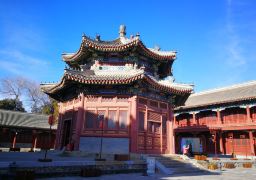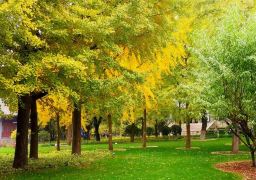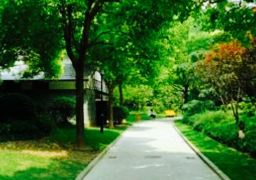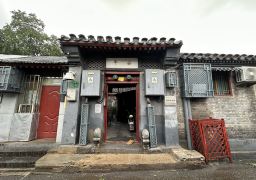Jinyun Temple is located in Beibei District, Chongqing City. It is situated in Jinyun Mountain, a Buddhist holy land with a history of more than 1,500 years. It was first built in the first year of Jingping in the Liu Song Dynasty of the Southern Dynasties (423). Later, it was called ‘Xiangsi Temple’, ‘Chongsheng Temple’, and ‘Chongjiao Temple’, and has been bestowed by emperors of all dynasties. Jinyun Temple is an ancient Buddhist site of Kasyapa Buddha. Since ancient times, there has been a school in the temple named ‘Jinyun Academy’. In front of Jinyun Temple, there is a stone screen wall. It is a bluestone relief, 4.0 meters high and 4.0 meters wide. Experts have identified it as a cultural relic of the late Tang Dynasty. In the center of the stone screen wall is a picture of plantain and unicorn. There are water chestnut patterns on each side. Below are reliefs of blue lions and white elephants. The entire pattern is simple and elegant. This is one of the key protected cultural relics in Jinyun Mountain. In 1984, a pavilion was built outside the stone screen wall to protect it from wind and rain. Above the stone screen wall and in front of the mountain gate of Jinyun Temple, there is a majestic stone archway. This stone archway of the Ming Dynasty is 6 meters high and 5 meters wide and is made of bluestone. It is decorated with patterns of birds and beasts carved on it. The top is decorated with relief bluestone. On the upper layer of the front of the archway is embedded the word ‘imperial edict’. The inscription is: ‘October 29th, the second year of Daming’. The lower layer is a plaque with four characters ‘Kasyapa Buddhist Site’, which is the imperial handwriting of Emperor Shenzong Zhu Yijun in the 30th year of Wanli in the Ming Dynasty (1602). On the back of the archway, the upper layer is embedded with the word ‘imperial order’. The lower layer is ‘Jinyun Scenic Area’, which was written by Emperor Chengzu Zhu Di in the fifth year of Yongle in the Ming Dynasty (1407). The inscriptions on the archway are vigorous and powerful, with heroic momentum. In front of the archway, there is a pair of stone-carved blue lions, 1.70 meters high, standing on both sides and glaring. Inside the temple, there is also a large iron bell. It is about 1.60 meters high, with a bottom diameter of 1.50 meters and a waist diameter of 0.9 meters. It was cast in the second year of Daoguang in the Qing Dynasty (1822). Outside the mountain gate, two towering ginkgo trees reach straight into the blue sky. The ancient temple bell and the mountain pine waves complement each other. The Shuangbai Jing She inside the temple is the living quarters of the abbot. The Zen rooms on both sides and the stone carvings form an antique charm. Outside the temple, there are also a stele inscription of the Chinese and Tibetan Buddhist Institute of the World Buddhist Academy and a pagoda of Master Taixu and a pagoda of Master Zhengguo. To the northwest of the Kasyapa Hall, there is an octagonal well. It is carved out of stone and is more than 10 meters deep. The pool water is clear and blue and never dries up all year round. Legend has it that when a number one scholar surnamed Feng was studying here, he often washed his ink in the pool, so it is called ‘Ink Washing Pool’. Jinyun Temple, together with Wenquan Temple, Shaolong Temple, Baiyun Temple, Shihua Temple, Fuxing Temple, and Dayin Temple, are all Buddhist temples and are collectively known as the ‘Eight Great Temples of Jinyun Mountain’. Standing beside Jinyun Temple and looking up, through the numerous halls and lush forests, one can see the high viewing tower on Xianglu Peak of Jinyun Mountain. One can see the millennium-old ancient temple and the green mountains complement each other.
The specific opening hours and business status are subject to the opening situation on that day.Jinyun Temple
Jinyun Temple is located in Beibei District, Chongqing City. It is situated in Jinyun Mountain, a Bu[...]









